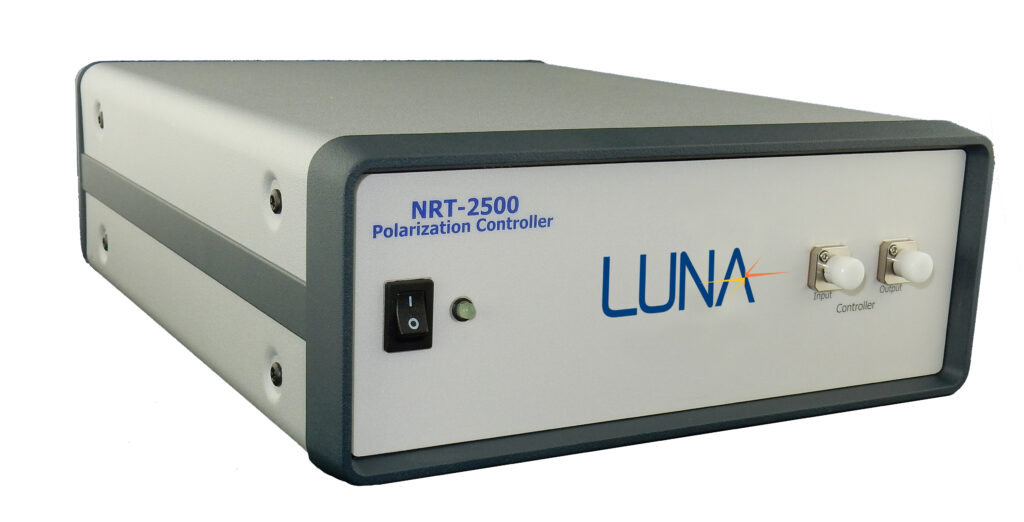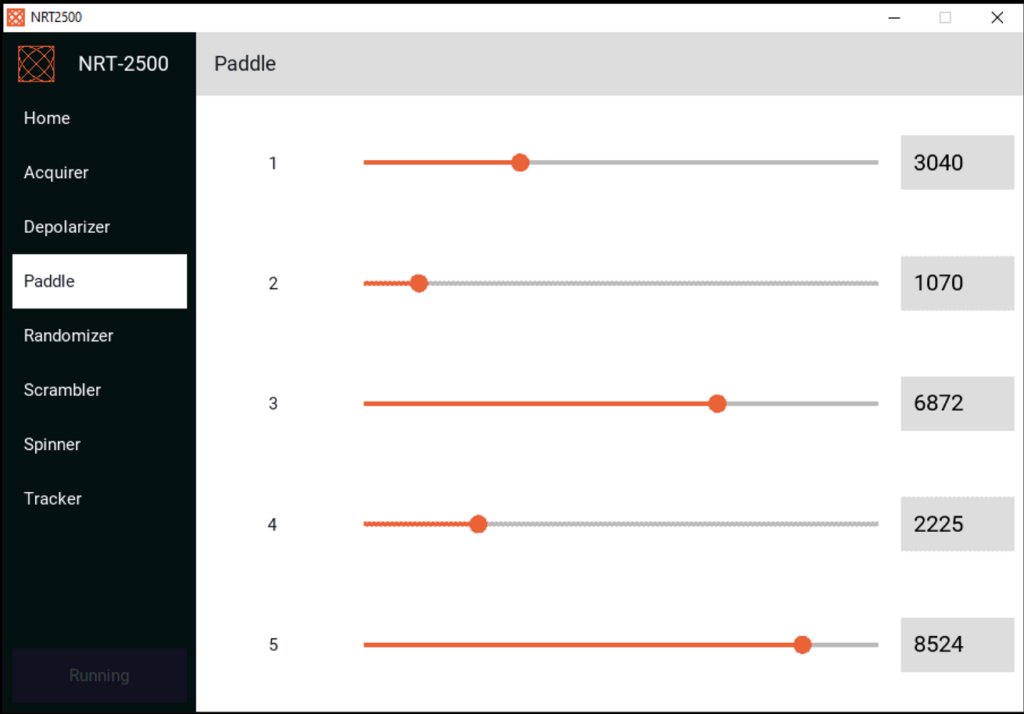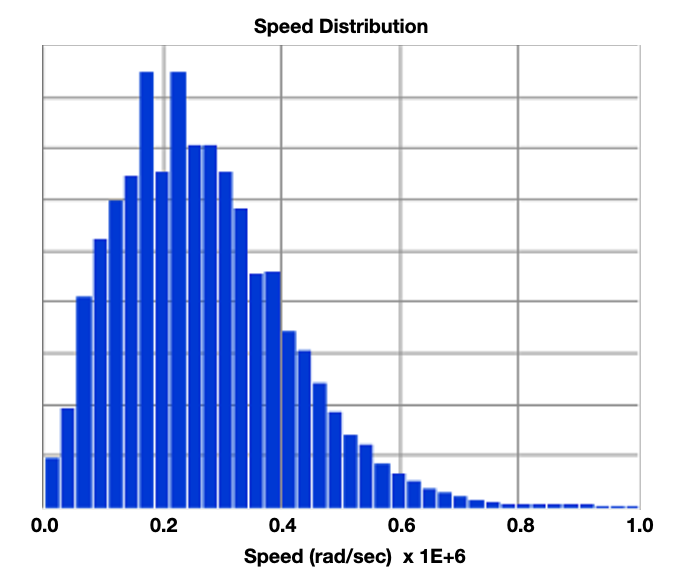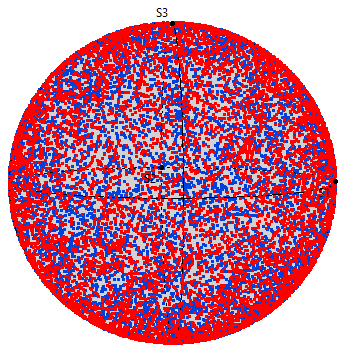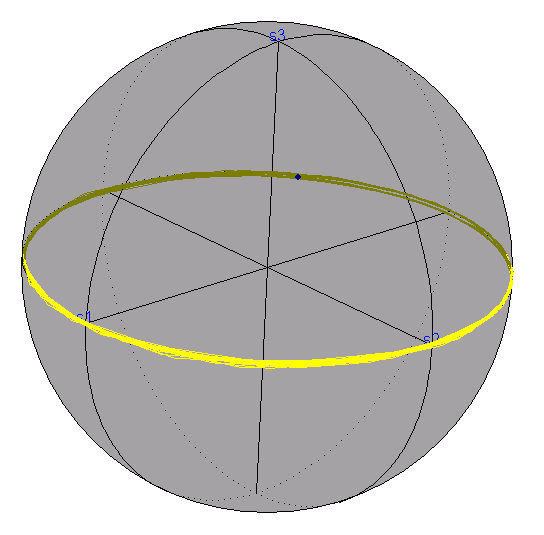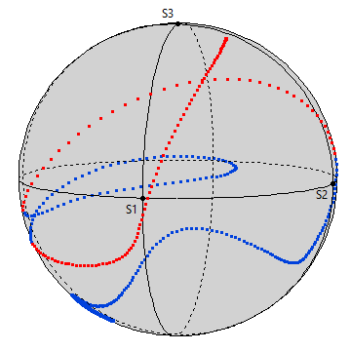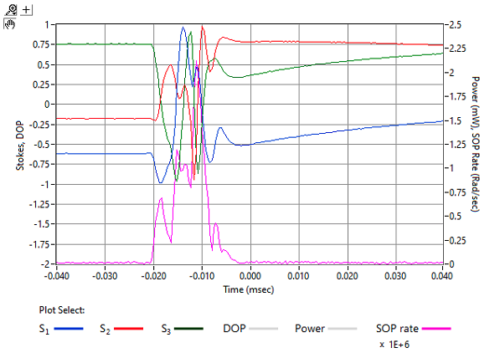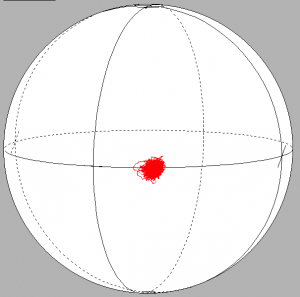Overview
NRT’s polarization control platform combines an integrated-optic Lithium Niobate (LiNbO3) waveguide polarization-controller device for super-fast polarization response driven by a customizable DSP/FPGA platform for functional flexibility. Together they enable NRT to provide a wide range of polarization operations in one product. There are currently five six seven polarization functions described below.
Polarization Functions
1. Paddles (Set Polarization)
This is perhaps the most common polarization control operation used in the lab. The NRT-2500 provides the electronic equivalent of 4 Lefevre fiber-optic paddles to align the pump to the probe or the signal to the local oscillator, maximize light through a polarization element, or polarization-demultiplex optical communication signals.
Each ‘electronic paddle’ is controlled through the user interface to set the polarization where you need it. Move the sliders or enter a values from 0 to 1000.
2. Scrambler
The NRT State of Polarization (SOP) Scrambler provides full and uniform coverage of the Poincaré Sphere characterized by a stochastic Rayleigh distribution of SOP speeds. This mode is invaluable for testing the robustness of polarization tracking and locking schemes.
3. Depolarizer
The most recent addition to the NRT-2500 polarization functions is the Depolarizer. As the name implies, the Depolarizer is a (single speed) ultrafast scrambler designed to reduce the degree of polarization of the measured signal. The Depolarizer is primarily used to remove PDL from power measurement and detector calibration.
4. Spinner
New generation coherent PM-QPSK transceivers, for 40G, 100G and above communications systems, require verification testing to assure the operate reliably even when the SOP changes extremely rapidly. The Spinner Mode simulates a 1⁄2-waveplate, rotating the SOP up to 75 KHz (>470,000 rad/sec for linearly polarized light), controllably, repeatably endlessly to stress these transceivers.
5. Randomizer
The NRT-2500 Polarization Randomizer mode randomly ‘jumps’ the output SOP about the Poincaré sphere every (user-input) time interval, or when triggered by externally. The trigger mode is useful to simulate the SOP temporal response to lighting strikes on coherent DSP receivers or to change the SOP at every pass through a fiber loop testbed.
Example of ultrafast Randomizer SOP event.
6. Tracker
Fast Robust and Endless Polarization NRT’s unique tracking algorithm enables virtually perfect SOP tracking with no dropouts or ‘glitches’ for your new applications and prototypes. The NRT-2500’s open architecture allows you to optimize the performance for your specific application:
- Create a unique error signal from four A/D converter inputs,
- Optimize algorithm parameters with Tracker’s ‘Optimizer’ program.
New Ridge has leveraged many years of experience in the Tracker. And has packaged it all together for you. The Tracker’s technology is so robust, it has been incorporated in multiple systems and qualified for network deployment at a number of carriers worldwide.
The tracker function is also offered in OEM daughter-card formats for your system application. See the NRT-250 page.
7. Acquirer
For many device test applications the user wants to immediately set the SOP at the maximum or minimum transmission through a device under test (DUT). For these applications the Paddles are too slow and cumbersome, and the Tracker dithers make it too jittery. The new Acquirer mode ‘acquires’ the correct SOP by adjusting each waveplate feedback for optimal feedback. Depending on the DUT and set-up, the Acquirer can move between the (usually orthogonal) SOPs, from maximum and minimum feedback, in only a couple of microseconds. (See the picture below.)
The Acquirer mode is perfect for situations where the fibers between the source and the feedback detector (via the 2500 and the DUT) are stable, such that the SOP is static long enough for a measurement. Applications include polarization diversity testing of devices and photonic integrated circuits (PICs) on wafers and chips.
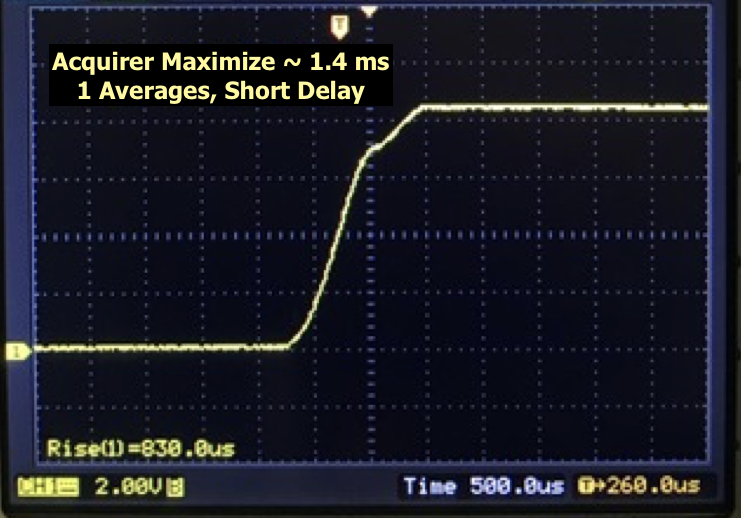
Sample Applications
- Optical Polarization Demultiplexing
- PMD tolerance testing of transponders
- Optical polarization demuxing
- Testing electronic pol-demux
- Optical PMD compensation
- Coherent detection
- Detector calibration
- Ultrafast ∆SOP/∆t event generation
- Power combining
- Polarization diversity testing
- Photonic integrated circuits, wafer and chip testing
Key Specifications1
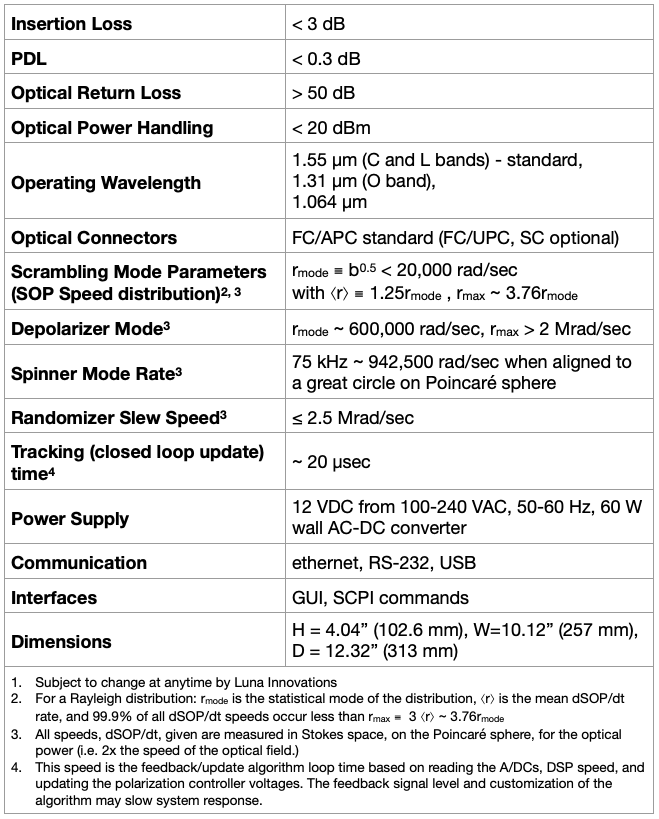
Datasheet
User Manual
Download Latest NRT-2500 (SCPI) User Manual (pdf)
Download NRT-2500 (Labview GUI) User Manual (pdf)
Download NRT-2500 DLL User Manual (pdf)
Quotation
Do you have a polarization control problem or function? Perhaps the NRT-2500 can help? Please contact us to discuss your requested application.
For more information, please contact New Ridge Technologies:
[email protected] or call: +1-410-753-3055

